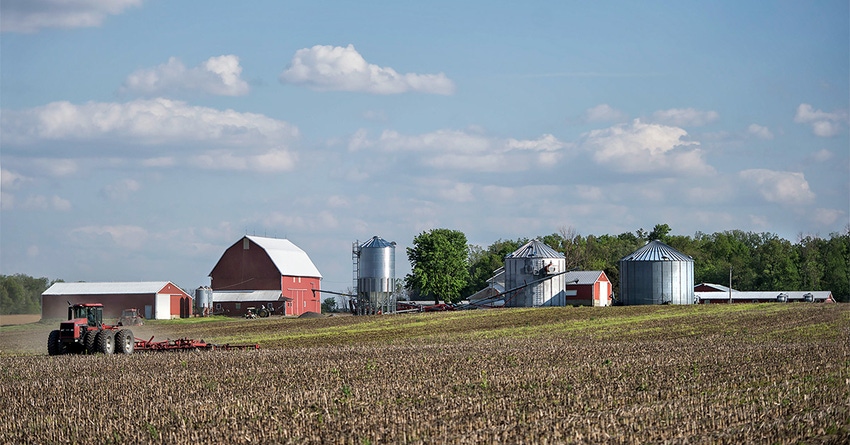Ag economists forecast weak crop prices, farm incomes in 2017
Agriculture exports expected to recover slightly.

Farm incomes will likely continue to slump next year with grain prices remaining at or near their lowest levels in about a decade, according to an analysis by agricultural economists at Purdue University.
U.S. agricultural exports are expected to recover slightly after two years of decline, but not nearly enough to offset increasing global grain stocks, said Chris Hurt, editor of the "Purdue Agricultural Economics Report."
“In the last three years, U.S. production has outpaced usage for corn, soybeans and wheat,” Hurt explained. “Abundant inventories of grains and soybeans mean low prices.”
Corn prices for Indiana producers are expected to average $3.45/bu. in 2017, down from $3.85/bu. in 2015. Soybean prices are expected to fare better, hovering around $9.50-10.00/bu. primarily because of lower production in South America last season and relatively stable global demand. Hurt cautioned, however, that soybean prices could fall to around $9/bu. if South American production picks up and more U.S. acres are planted to beans.
“Market prices in the next few years will be in the process of adjusting acreage to cause increases in corn and wheat prices, but at the expense of more soybean acres and lower bean prices,” Hurt said.
Livestock producers typically benefit when the grain they use in animal feed is cheaper, but three years of steadily increasing production has kept beef cattle prices low, with little recovery in sight, Jim Mintert, director of the Center for Commercial Agriculture, noted.
“After averaging near $153/cwt. in 2016, prices for 500-600 lb. steers in Kentucky could average in the $120s in 2017,” Mintert said. “Calf prices at this level are below the breakeven price on many cow/calf operations, which could bring herd expansion to a halt in 2017.”
Craig Dobbins, farm management specialist, said the weak overall prospects for the Indiana agricultural economy have hurt farmland values.
According to the annual "Purdue Farmland Value Survey," an acre of average Indiana farmland was worth $7,041 last year, down from a peak of $8,129 in 2013 — a 13.4% decline.
“The primary force behind the farmland value decline has been the decline in crop production profitability,” Dobbins said. “While there are several positive forces in the farmland market, these positive factors are overridden by low farm commodity prices and low contribution margins.”
University of Illinois agricultural economist Gary Schnitkey said rising interest rates could also begin to affect farmland values if rates continue to rise.
“Since the U.S. election on Nov. 8, interest rates on many financial instruments have increased. Interest rate increases since Nov. 8 likely are not large enough to put much downward pressure on farmland prices. However, farmland prices could decline if interest rate increases continue,” he said.
According to Schnitkey, rising interest rates put downward pressure on farmland prices for two reasons. First, higher interest rates increase the financing costs of land purchases, making it more expensive to debt finance farmland. Second, higher rates signal higher returns on alternative investments, thereby making alternative investments more attractive than farmland.
He said the most recent interest rate increase doesn't mean farmland values declines need to occur, but he added that this may be necessary in the future.
About the Author(s)
You May Also Like


